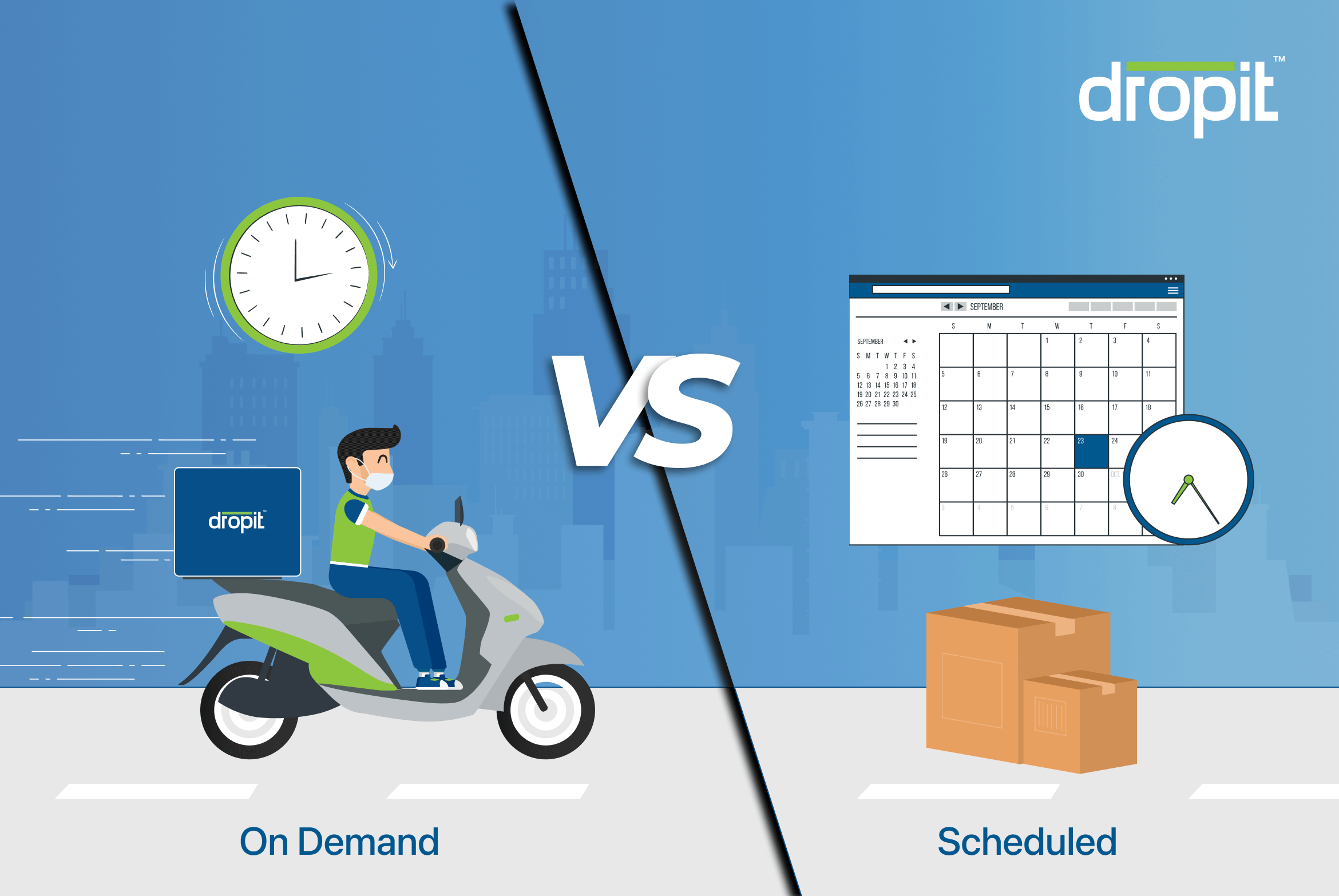In today’s competitive retail and eCommerce world, delivery isn’t just about moving a product, it’s about providing convenience, flexibility, and control to the customer. Two powerful models are reshaping customer expectations: on-demand and scheduled deliveries.
Companies like Dropit are at the forefront of this shift, offering both options through their platform. But what makes each model unique? How do they serve different customer needs? And how can businesses benefit by offering both?
Let’s break it down.
1. Understanding On-Demand Deliveries
On-demand delivery is exactly what it sounds like customers place an order, and it’s delivered immediately or within a few hours.
Think food delivery apps, grocery orders, or urgent gift purchases. It’s all about speed, convenience, and real-time service.
Why Customers Love It:
- Urgent needs are met instantly
- Reduces waiting time anxiety
- Feels personalized and high-touch
Business Benefits:
- Higher margins on urgent deliveries
- Increased customer satisfaction
- Great for impulse or essential purchases
2. What Are Scheduled Deliveries?
Scheduled delivery allows customers to choose a specific time slot in the future for their order. It’s about predictability and planning.
Common in larger-item logistics (furniture, appliances) or for busy customers who want flexibility, this model offers efficiency for both buyers and delivery services.
Why Customers Love It:
- Full control over timing
- Aligns with their availability
- Avoids missed delivery frustration
Business Benefits:
- Easier route planning and batching
- Reduced failed delivery attempts
- Lower operational cost due to efficiency
3. Dropit’s Hybrid Model: Best of Both Worlds
Dropit offers both on-demand and scheduled deliveries giving users the ability to choose what fits their lifestyle.
By integrating real-time logistics with flexible scheduling, Dropit empowers retailers and customers alike to co-create the delivery experience.
This flexibility is made possible through:
- Smart dispatch systems
- AI-powered routing
- Real-time driver updates
- Predictive time-slot optimization
4. Tech That Makes It All Work
Neither model is possible without powerful backend systems.
Here’s how Dropit’s technology supports both:
- Live tracking ensures customers know where their order is at all times
- Inventory sync with store partners allows efficient pick-pack-dispatch
- Dynamic routing allows Dropit to re-route deliveries based on real-time data
- Intelligent batching helps Dropit combine scheduled orders on optimal routes
5. When to Use On-Demand Delivery
On-demand shines in specific scenarios. Here are common use cases:
- Food & Beverage: Freshness matters
- Pharmacy/Essentials: Timely access saves lives
- Gifts: Forgotten birthdays? No problem
- High-demand launches: Immediate delivery adds excitement
Retailers using Dropit can enable this model during peak hours or for high-margin SKUs where the value of speed outweighs the cost.
6. When Scheduled Delivery Wins
Scheduled delivery works best in:
- Bulky goods: Customers want to be home
- Non-urgent items: Better cost optimization
- Subscription boxes: Recurring scheduled drops
- Eco-conscious users: Efficient batching reduces emissions
Scheduled delivery also helps businesses lower cost per delivery, reduce vehicle use, and optimize driver time.
7. Customer Segmentation: Different Preferences, Same Platform
Different customers have different needs and they expect options.
With Dropit, the platform adjusts:
- Gen Z and millennials → prefer instant gratification (on-demand)
- Working professionals → want predictable slots (scheduled)
- Older customers → value control and reliability
By offering both models, Dropit ensures no customer segment is left behind.
8. Operational Challenges — and How to Solve Them
Running both models in parallel can be complex. Challenges include:
- Driver allocation: Prioritizing immediate vs. future deliveries
- Inventory readiness: Ensuring item availability across timeframes
- Fleet optimization: Managing routes without overlap
Dropit addresses this using:
- Real-time data streams
- Rider availability maps
- Auto-routing powered by demand forecasting
9. The Competitive Edge of Offering Both
Most platforms stick to one model which limits reach. Offering both models gives businesses:
- A stronger customer retention strategy
- Higher average order value due to better convenience
- Improved loyalty metrics by delivering exactly what customers want, when they want it
Retailers using Dropit have seen up to 35% improvement in repeat purchase behavior after enabling flexible delivery options.
Conclusion: Let the Customer Decide
The delivery experience is no longer one-size-fits-all. Brands that win in 2025 and beyond will be those that offer freedom of choice empowering the customer to select speed or schedule.
With Dropit’s smart delivery infrastructure, retailers don’t have to choose if they can do both.
Want to scale your delivery experience?
Partner with Dropit and offer your customers the power of choice on-demand or scheduled, always smart.
